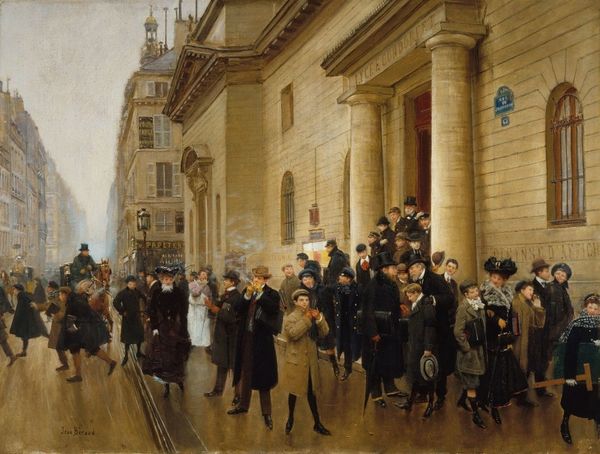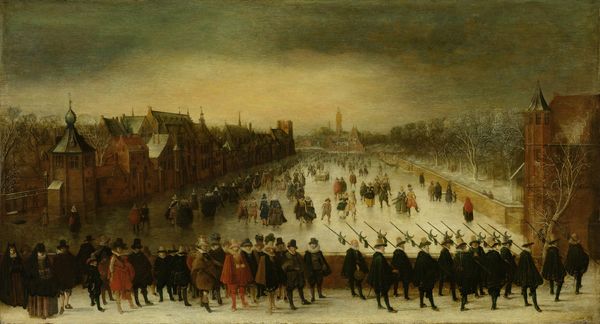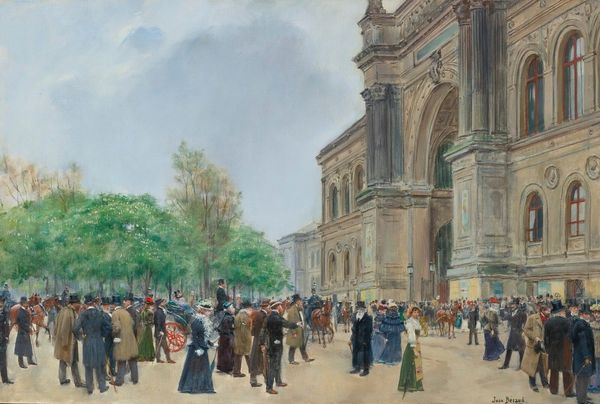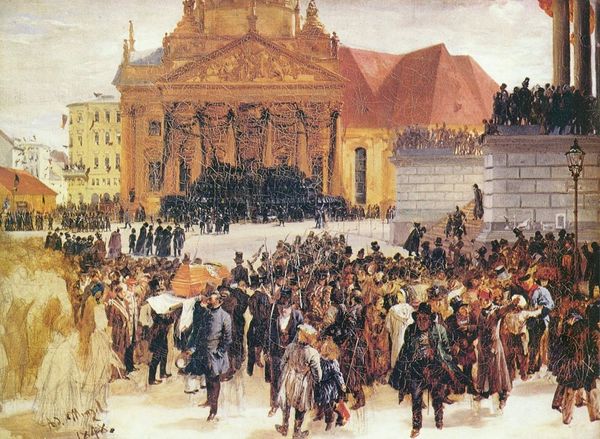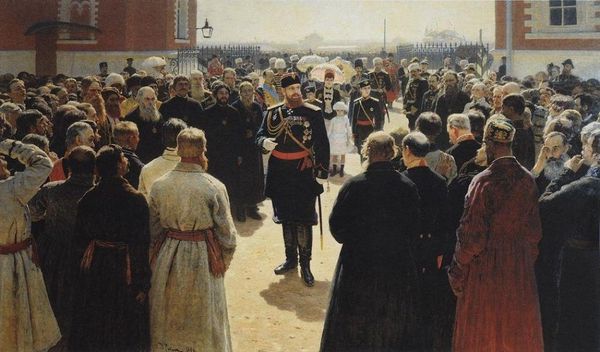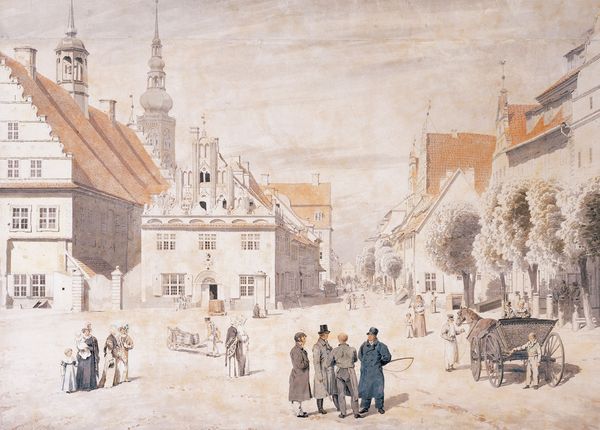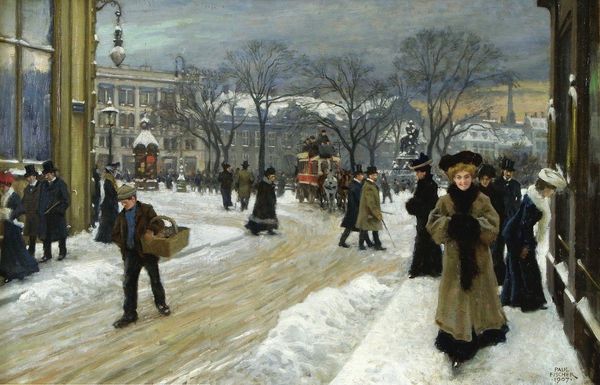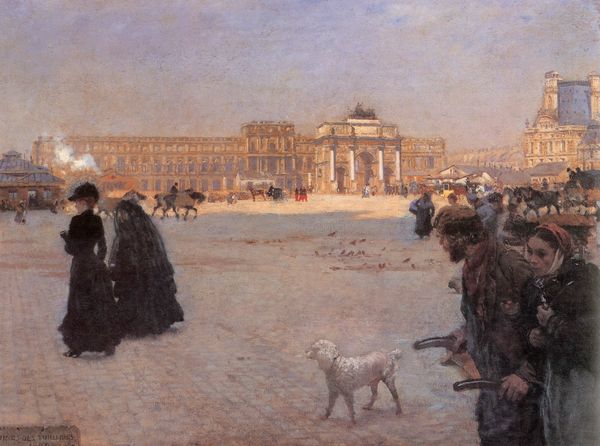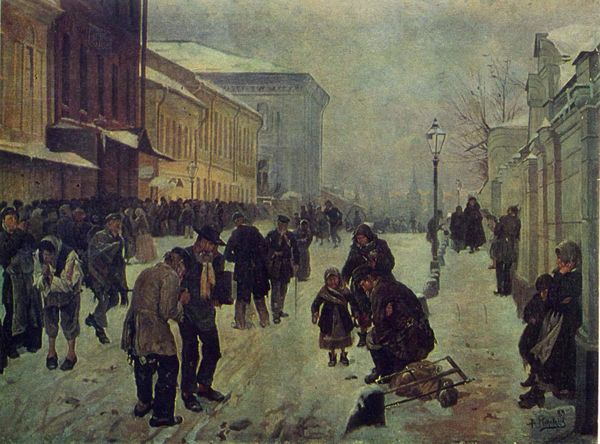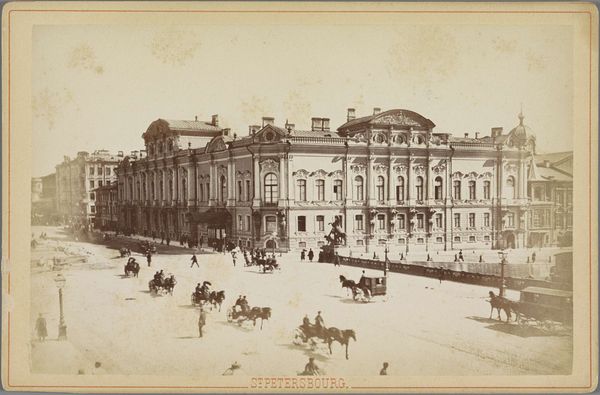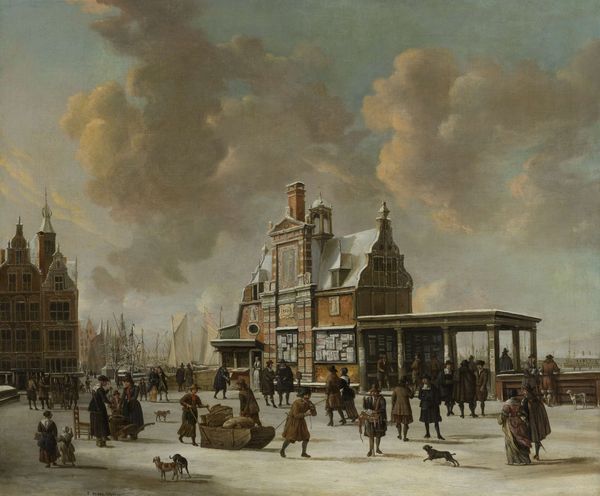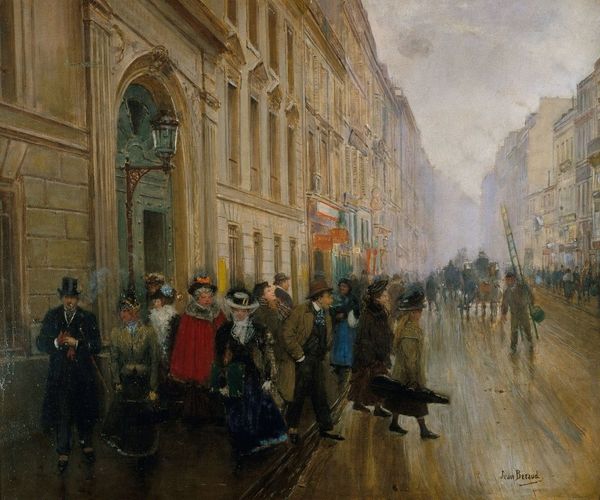
Copyright: Public Domain: Artvee
Editor: This is Paul Fischer's "Changing of the Guard at Amalienborg Palace," painted around 1902 or 1903. It feels very much like a moment captured in time, a fleeting glimpse of Copenhagen life. It strikes me how everyone seems to be waiting. What symbolic meaning do you find here? Curator: Waiting is precisely it. Think of the image of the guard itself. What does it signify to you? The unchanging nature of the state? Perhaps the continuity of the monarchy against the backdrop of a changing society? The eye is drawn to the ritualized action, this cyclical changing of the guard. Editor: It is like the state is in a continual loop. Does the grey sky add a layer of somberness to that cyclical nature? Curator: Indeed. Grey, white - they evoke a certain coolness, restraint, but also clarity. And how do those colors play with the sharp angles of the buildings? Look closer: What details stand out to you about the faces? Do they look expectant, indifferent, or perhaps resigned? This range suggests different attitudes towards nationhood, doesn’t it? Editor: Many seem stoic. There's that small boy looking towards the viewer - is that supposed to mean something in particular? Curator: The boy might signify the future, looking at us, generations who must take up the banner of a nation’s values. Fischer uses symbolism here that urges the viewer to engage with themes of legacy. Think, too, of what a royal palace signifies, especially at this moment in history. How does the monarchy interact with common life, how does tradition resonate with a society that may yearn for change? Editor: It’s amazing how a simple scene holds so much layered meaning. Thanks, I see it quite differently now! Curator: Yes, reflecting on cultural memory woven into everyday scenes certainly enriches our viewing experience.
Comments
No comments
Be the first to comment and join the conversation on the ultimate creative platform.
